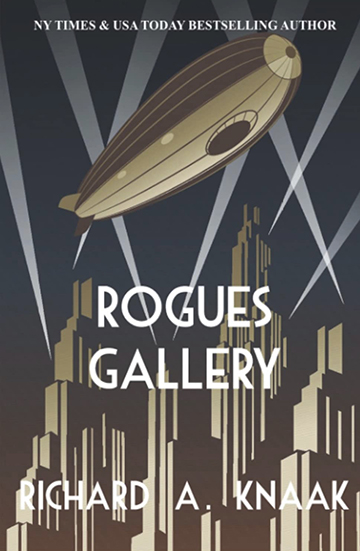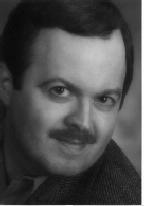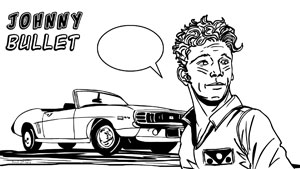|
|
 |
Also on the side of chaotic good is Mirror, a woman seeking revenge against the city’s elite for the death of her lover. Armed with a mask that can induce fear and madness, she partners with the Plunderer in the hope of furthering her vendetta. Joining them is Dr. Arcanum, a master stage magician seeking actual magic.
But if the criminals are siding with the law, who’s terrorizing the city? That would be the Wolfpack, a group of freelance henchmen currently employed by Bloodwyrm and Lady Cain. They’re determined to hunt down the Legionary, even if they have to burn Chicago to the ground. Meanwhile, a master manipulator seems to be pulling the strings of a more daring agenda.
The novel (possibly the first in a series) is an entertaining experiment of heroes vs. villains, but without the heroes. Det. Merrett is about as good and honest a cop as Chicago has to offer, but he is hampered by corruption, indifference and bigotry. The more honest criminals have potentially heroic fiber, even if it doesn’t run terribly deep.
Author Richard Knaak
has written more than 50 novels, so clearly he knows what he’s doing. The
challenge here is to capture the mood of a world from generations past, when
even those who knew it first-hand may have but the dimmest recollection. Knaak
fills in any blanks with generous scoops of nostalgia. Whether it’s accurate or
not is unimportant; it’s a fun, other-worldly Chicago, perhaps inspired by
the Gotham City of the animated Batman series. Airships, fedoras and Tommy guns
are the order of the day, portrayed against an almost perpetual backdrop of
midnight and neon.

Author Richard A Knaak
As a big fan of both super-heroes and pulps, I loved this book, and look forward to further installments. Part of me is rather curious about the characters visual appearances. However, I’m reluctant to have my expectations wiped away. It’s like the Golden Age of radio, when the “theater of the mind” was in full bloom. So perhaps an accompanying comic book or other illustration is not for me.
I give Rogues Gallery 5 out of 5 stars.
© Copyright 2002-2025 by Toon Doctor Inc. - All rights Reserved. All other texts, images, characters and trademarks are copyright their respective owners. Use of material in this document (including reproduction, modification, distribution, electronic transmission or republication) without prior written permission is strictly prohibited.

